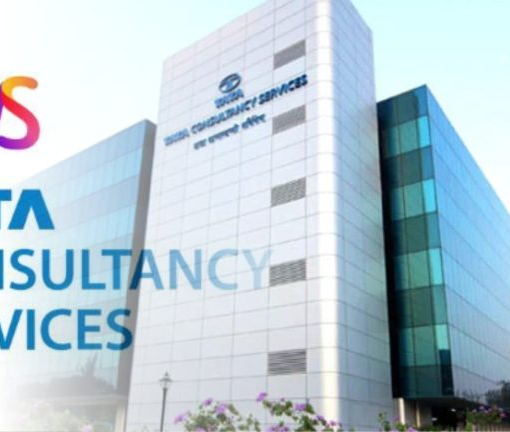The media and entertainment sector has also altered its course, moving away from a conventional arrangement and embracing trends in digital transformation. The waves of technological progress that have upended the media and entertainment sector include the use of artificial intelligence, augmented reality, curated content, better advertising, etc. The media industry now has a venerable potential to increase relationships with the appropriate group of targeted viewers thanks to the SAP software solution.
As viewers continue to consume material in novel and unexpected ways, the global media and entertainment sector is changing. And they anticipate that producers of media and entertainment will be aware of them and create material that reflects their preferences.
These businesses can advance thanks to SAP S/4HANA®. It is a step in a transformation process that moves businesses from an ERP environment that is specifically tailored to them to a more standardized and straightforward Digital Core that can foster data and innovation.
It is incorrect to see SAP S/4HANA as a technological or functional update. It is a new and improved style of working and a more stable and resilient platform that combines adaptable technological changes, legal requirements, and predictive capabilities to give real-time information to help business decision-makers make better choices.
The ability to innovate is embodied by SAP S/4HANA. The solutions that give media and entertainment firms a competitive edge can be designed, delivered, and operated by Capgemini with experience. In Seizing the SAP S/4HANA Opportunity, learn how SAP S/4HANA can begin the transformation to a data-driven business with the ability to meet all financial obligations.
The media sector has undergone a digital transition, according to Mr. Richard Whittington, Senior Vice President of Media Business Solutions at SAPSE. “We see the winners as those organizations that can develop enduring customer relationships, powered by engaging individualized content,” Customers may simplify with a digital core, speed strategic decision-making, optimize daily business activities, and streamline data models using SAP S/4 HANA.
By streamlining their operations, media organizations must digitize if they want to increase revenue and cut costs. How the consumer is served determines the value of the digital economy. Innovative, distinctive technological solutions, built on and coordinated by the digital core solutions, frequently lead to the development of value. The Internet of Things, the supply chain, the workforce, and customers are all connected by the digital business framework, which serves as a platform for innovation and business process optimization. Companies require an IT infrastructure that offers stability and long-term reliability for the core enterprise activities while at the same time allowing for flexibility in areas where change is constantly happening as they reinvent their entire organization. Companies require an IT infrastructure that offers stability and long-term reliability for the core enterprise activities while at the same time allowing for flexibility in areas where change is constantly happening as they reinvent their entire organization.
Through integrated business solutions that make use of intelligent technologies and can be expanded on the SAP®Cloud Platform, SAP assists media firms in becoming intelligent enterprises. On our customers’ path to becoming intelligent companies, this enables next-generation business processes to generate ground-breaking business value.
How SAP Supports the Digital Media Industry
The digital upheaval that is reshaping the media sector has come a long way.
The media sector has seen a significant transition due to digitalization during the past 20 years, and change is continuously accelerated due to improvements in consumer technologies. Hyper-connectivity, immersive experiences, machine learning, audience insights through analytics, cloud, security, and privacy are examples of technological advancements. The fundamental business operations, which must function consistently and without interruption, are built on the digital core. The framework’s core enables big data work, real-time transactions, analytics, and connectivity to the framework’s four outer pillars.
- For real-time insights and innovative business models, big data and predictive functions harness consumer connectivity, big data analytics, and data-driven automation.
- For flexible communication with you, your consumers need a variety of channels.
- In order to quickly onboard new suppliers and switch to alternative providers with ease, flexibility and adaptability in working with business networks are essential.
- And finally, creating and retaining an agile workforce calls for a great deal of flexibility.
SAP S/4 HANA and SAP Cloud Platform’s roles
Media companies are now able to digitize and innovate their business models thanks to SAP S/4 HANA and SAP Cloud Platform. It offers innovative cloud-based tools for creating and distributing content anywhere as well as customer analytics. Let’s examine this shared responsibility in greater depth.
Analytical Services for Customers
As content reigns supreme in the media and entertainment sector, SAP S/4 HANA and the cloud platform assist in streamlining and tailoring content to the preferences of the audience. By using key information from the analytics tools, you may improve the relevance of the material.
New Cloud-Based App Development
Media firms can quickly develop new cloud-based mobile apps thanks to the SAP Cloud Platform for the next-generation audience, which is always connected via mobile devices.
A larger storage capacity
The combination of data stream processing, in-memory computing, and Hadoop-based storage solutions simplifies the management of all data streams.
Data Footprint Reduction
Media companies can reduce their memory footprint and total cost of ownership by using SAP S/4 HANA (TCO). By compressing the dictionary, the Enterprise Resource Planning (ERP) Software can lower the footprint by a factor of six. The effectiveness to reduce the footprint would, however, increase up to ten times if the historical data is segregated and aggregates are eliminated.
Examples of a Few Used Cases Showing Success with SAP S/4 HANA by Media Organizations
- After installing the SAP S/4 HANA system, renowned media and information giant Thomson Reuters noticed a 98 percent faster ingestion.
- SAP S/4 HANA Finance and procurement software was implemented to transform Arclight Cinemas’ business operations. With SAP S/4 HANA, they can carry out 15 million transactions.
ESSENTIAL ACTIONS
- providing a top-notch content experience.
- serving the “segment of one” and focusing on the audience.
- Data monetization and audience insights.
- Increasing media value for sponsors and marketers by moving from content to commerce.
What is a media entertainment company?
A media entertainment company is a business organization that creates, produces, and distributes various forms of entertainment content to a wide audience. These companies operate in the media and entertainment industry, which encompasses a diverse range of content types and formats, including television shows, movies, music, digital content, video games, live events, and more.
Key Characteristics of a Media Entertainment Company:
- Content Creation: Media entertainment companies are primarily involved in the creation of content. They may produce original TV shows, movies, music albums, video games, or develop digital content for online platforms.
- Production and Distribution: These companies are responsible for the production of entertainment content, including pre-production, filming, editing, and post-production processes. They also handle the distribution of their content through various channels, such as theaters, broadcast networks, streaming platforms, or physical media distribution.
- Intellectual Property: Media entertainment companies often own valuable intellectual property rights, such as copyrights, trademarks, and licensing agreements. These rights allow them to protect and monetize their content across different mediums and markets.
- Talent Management: To create high-quality entertainment content, media companies often work with actors, musicians, directors, writers, and other creative professionals. They may have talent management divisions to scout and manage talent.
- Marketing and Promotion: Marketing and promotion play a crucial role in the success of entertainment content. Media entertainment companies invest in marketing campaigns to generate awareness and interest in their projects.
- Revenue Streams: Media entertainment companies generate revenue through various streams, such as box office sales, advertising revenue, subscription fees, merchandise sales, licensing deals, and royalties.
Examples of Media Entertainment Companies:
- Walt Disney Company: Known for producing animated and live-action films, television shows, theme parks, and merchandise. Disney owns multiple entertainment subsidiaries, including Pixar Animation Studios, Marvel Studios, and Lucasfilm.
- Warner Bros. Entertainment: A major film and television production studio that produces movies, TV shows, and operates the Warner Bros. Pictures Group, Warner Bros. Television Group, and DC Films, among others.
- Netflix: A leading streaming service that produces and distributes original TV shows and movies while also licensing content from other studios and production companies.
- Sony Music Entertainment: A division of Sony Corporation, responsible for music production, distribution, and artist management.
- Electronic Arts (EA): A video game company that develops and publishes popular video games for various platforms.
- Live Nation Entertainment: A live events and concert promotion company that organizes and manages concerts, festivals, and live performances.
These are just a few examples of media entertainment companies in a vast and dynamic industry that continues to evolve with advancements in technology and changing consumer preferences.





